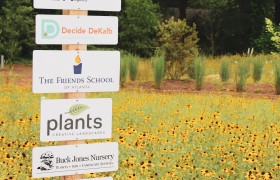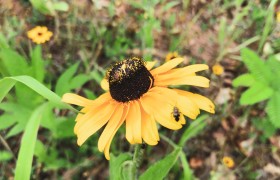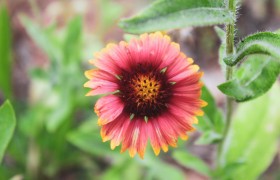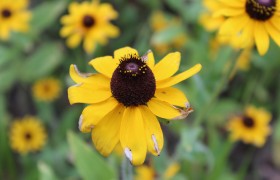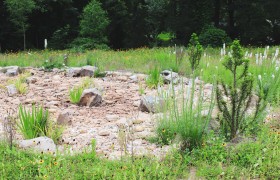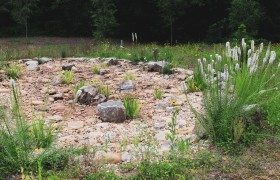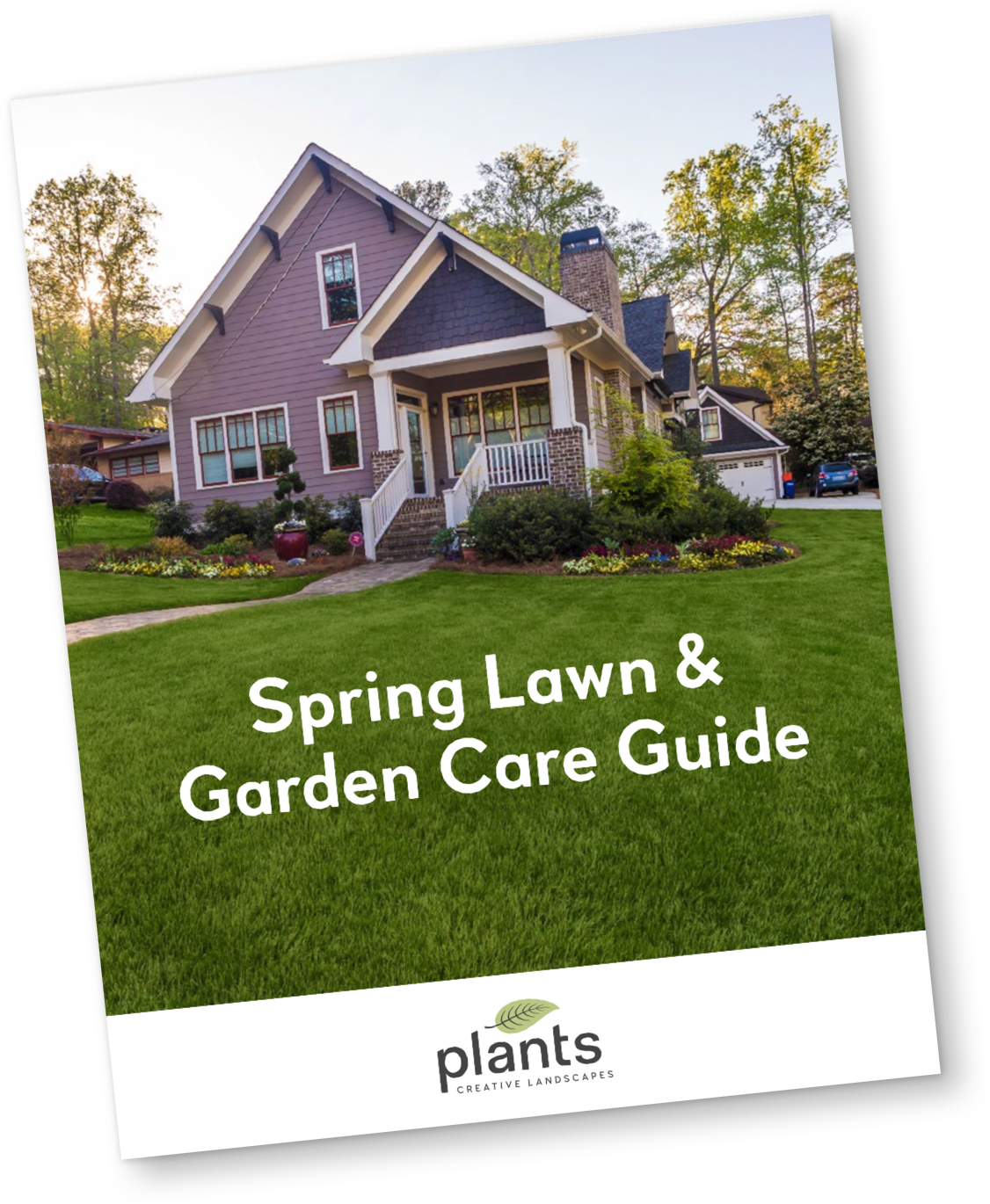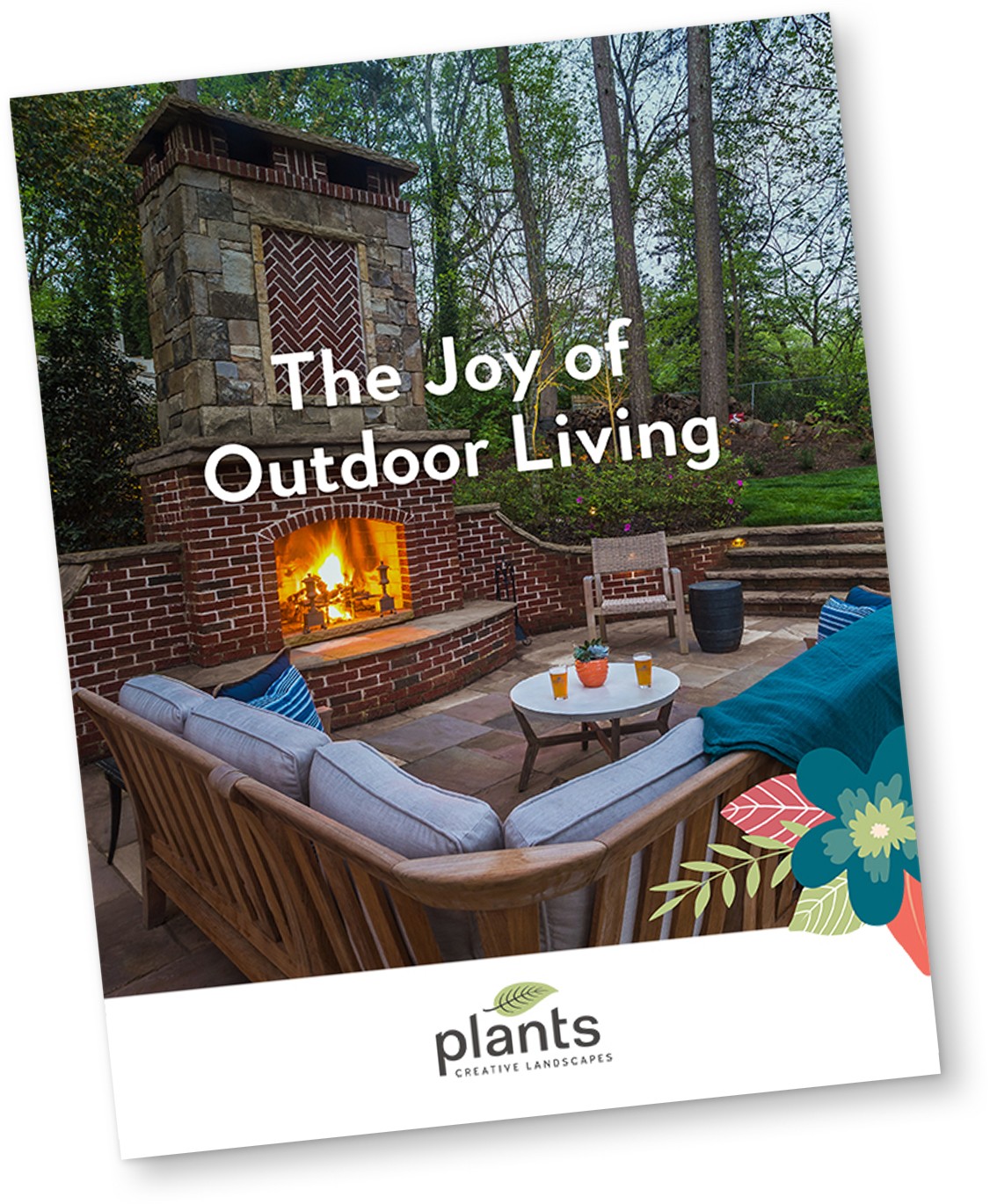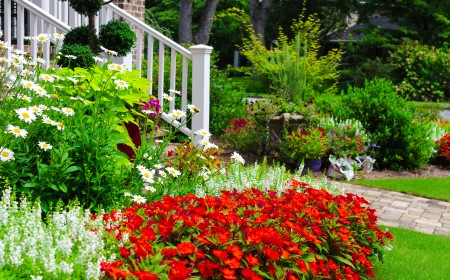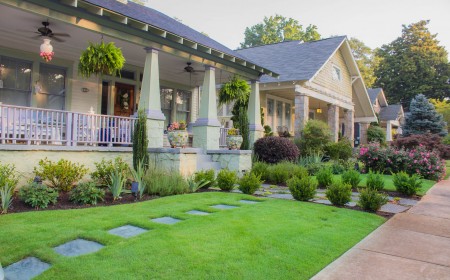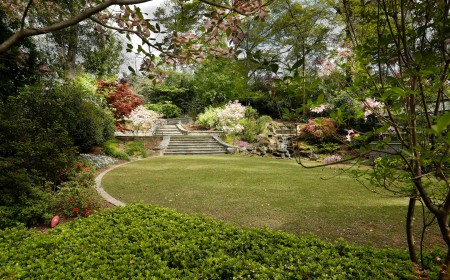In an earlier post, I focused on the pollinators and native plants used in eco-friendly landscapes. But pollinators need more than just plants to feed on! They also need to be hydrated. In this post, I’ll focus on two aspects of landscapes that determine how water is used — and how it can affect whether your landscape is benefiting the local ecosystem.
Water features
A wonderful way to attract pollinators is to incorporate water features — fountains, ponds, and waterfalls — that can be used by birds, bees and butterflies.
One great example is what I like to call “bee water stations”. These are really straightforward, and you could even try to make a simple one at home. Essentially, you take a bowl and put some marbles inside. Then, fill it with just enough water to have a shallow surface — think an eighth of an inch — on the top of the marbles. The marbles themselves act as “landing pads” for the bees to sit on while they drink
Rain gardens
In residential areas, there’s a lot of water runoff from roofs — especially during storms. One of the more sustainable, eco-friendly ways to manage this extra water is by installing a rain garden. They’re really growing in popularity!
Rain gardens are gardens designed and built with a basin underneath them. Downspouts from the roofs of houses, sheds or other roofed structures are directed toward the garden. When it rains, the water is collected and contained in the basin, allowing it to slowly absorb into the surrounding soil.
When these are built, we dig fairly deep into the ground and mulch it well. Then we add water-tolerant plants. These create functional “water containment systems” that nourish your landscape’s ecosystem — all while looking beautiful!
Putting it all together: The East Decatur Greenway
When you put pollinator-friendly native plants, rain gardens and landscape design together, you get something beautiful. Recently, I was privileged to work with the people behind the East Decatur Greenway. This project took the property that an old gas station was on and converted it into a green space for public use! I helped contribute landscape design for the project, which included planting a rain garden and fields of wildflowers for pollinators.
When we started, there was a massive amount of contaminated soil from the gasoline. While the Environmental Protection Agency (EPA) came in and got rid of 98% of the contaminants, there was still some contamination that they couldn’t get out.
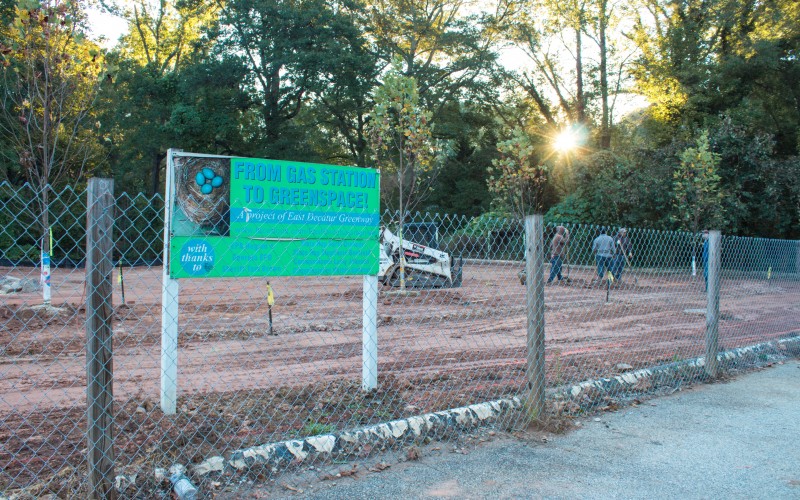
So, the native plantings helped “remediate” the soil. These plants were able to absorb the additional 2% of toxins from the soil, holding it instead in their cell structure! Today, looking at the Greenway, it’s crazy to think that this plot of land used to be a gas station. It’s bursting with poppies and daisies — and our pollinator friends couldn’t be happier. It’s astounding how amazing plants can be at repairing harm!
We even managed to capture a few photos of some friendly bees hard at work!

